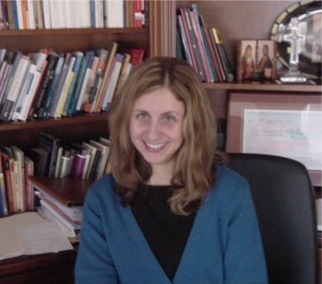German Scholars on Canadian Mennonite Writers
In this Issue
We are pleased to publish three essays by German scholars on Canadian Mennonite writers, along with a poetry feature by American poet Katie Lehman Pierce.
This group of essays engages issues of language and translation in complimentary ways. Wolfgang Hochbruck’s essay, “Rudy Wiebe’s Reconstructions(s) of the Indian Voice,” articulates three approaches to representing the multiple voices and languages of First Nations Canadians in Wiebe's fiction. This essay, originally published in France in 1989, takes on new relevance with the recent publication of Rudy Wiebe's Collected Stories: 1955-2010, which reveals Wiebe's full contribution in this genre. Martin Kuester’s overview of recent Canadian Mennonite literature, “A Complicated Kindness—The Contribution of Mennonite Authors to Canadian Literature,” raises the question of whether Canadian Mennonite writers owe some of their versatility and creativity to their multilingualism. Many of these writers have a background in Plautdietsch and German in addition to English, and perhaps hear these different “voices” as they compose their work. Christoph Wiebe approaches Miriam Toews’ A Complicated Kindness from a theological perspective in “’The Tail End of a Five-Hundred-Year Experiment that has Failed: Love, Truth, and the Power of Stories in Miriam Toews’ A Complicated Kindness.” As the pastor of the Krefeld Mennonite Church, one that has been in existence for 400 years without a split, he urges theologians to listen to the voices emerging from Mennonite literature. The essays by Kuester and Wiebe were translated from German into English by Gerhard Reimer, an American scholar and professor of languages who grew up as Mennonite in Manitoba.
Alongside these significant contributions to the criticism of Mennonite literature scholarship, we feature an American poet new to readers of Mennonite literature: Katie Lehman Pierce. Several of her poems published here have been inspired by Katie’s residence in Ireland, where she worked and studied with an Irish nun. Thus the works in this issue involve questions of transatlantic travel and translation—in terms of both culture and language.
We hope these works will lead to a deeper appreciation of the linguistic heritage of Canadian Mennonite writers, and the role that cultural exchanges play in contemporary literature by writers of Mennonite heritage. Look for a review of Rudy Wiebe's Collected Stories in an upcoming issue of the Journal.
Ann Hostetler and Gerhard Reimer, co-editors
In this issue:
-
0
read more

Rudy Wiebe’s Reconstruction(s) of the Indian Voice
by Wolfgang HochbruckThis essay originally appeared in RANAM: Recherches Anglaises et Nord-Américaines 22 (1989), 135-142, published by the University of Strasbourg
-
0
read more

A Complicated Kindness—The Contribution of Mennonite Authors to Canadian Literature
by Martin KuesterIntroductory presentations on the topic of Canada, Canadian studies and Canadian literature traditionally pose the question: “What is Canada? How do you define this country?” Canadians have often asked this notoriously famous question of themselves. Ever since the so-called “renaissance”—both a literary and a national renaissance—following in the wake of the 1967 centennial nationhood celebration, the Canadian identity question has been answered a hundred times and, thus, has almost become a cliché.
In this essay I want to talk about a group of Canadians who do not quite correspond to the stereotypical image we have of Canadians, nor to the …
-
0
read more

“The tail end of a five-hundred-year experiment that has failed”:
by Christoph WiebeTranslated from the German by Gerhard Reimer
-
1
read more

Featured Poet: Katie Lehman Pierce
by Katie Lehman PierceGarden Talk
In western Connemara, County Galway, Ireland, a Victorian walled garden stands on the grounds of Kylemore Abbey. The abbey, formerly known as Kylemore Castle, and its elaborate estate was built by a wealthy doctor in the 1860s. Since the 1920s, however, Kylemore has belonged to a community of Benedictine nuns. One particular nun and I worked within the mostly unkempt and hidden six-acre garden, tending to a small apple orchard and vegetable beds. The mystique of the garden and its history, including the Victorian women and gentlemen who had once traversed there, was riddled in the lavish undergrowth. …